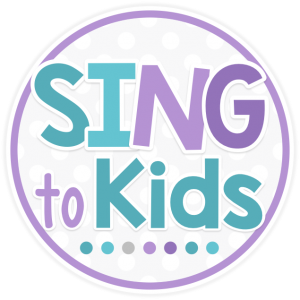
Preface
Warning – this post is for a very specific audience – Music Learning Theory practitioners. If you are new to MLT, might I suggest searching my blog for a few introductory posts about Music Learning Theory? You might also consider checking out the Gordon Institute for Music Learning page to learn more about MLT and how to find workshops and training in your area!
One of the things that sets MLT apart from other approaches is Learning Sequence Activities, known as LSAs. For those of us teaching LSAs, we know sometimes that the sequence of those units can be a bit daunting especially when we only see our kids 1-2 times a week for 30-45 minutes. I teach at a K-5 elementary school where I see my students once every 3 days for 40 minutes. With that said, I do not do LSA activities with my Kindergarten students. Kindergarten is devoted to transitioning students out of Preparatory Audiation, and towards the end of the year, introducing the Aural/Oral level of learning. My first through fourth grade students all engage in pattern instruction during each music class but there never seems to be enough time to get through it all. With that in mind, I’d like to offer some alternative ways to ensure your students are getting what they need via LSAs without missing essential parts of the sequence.
Let me preface our discussion with one important statement – I think there is value in every page in the LSA book. The reality is instructional time for music is at an all time low and getting through it all when you see kids once a week for 30 minutes just isn’t feasible. When it comes down to deciding on scope and sequence within your curriculum, my hope is that this will help you make the best instructional choices for your program.
“Learning sequence activities represent exemplary possibilities of how music learning theory through music learning sequence may be put into practice in accord with a teacher’s personal and pedagogical preferences.”
-Edwin E. Gordon
Rhythm Unit 1: Aural/Oral
This unit is two simple pages – 1A1 (Duple) and 1B1 (Triple). Both pages contain macro/microbeat patterns in their respective meters. It’s an easy and simple unit to get your students audiating and performing rhythm patterns at Aural/Oral. If you’re familiar with my practice in Kindergarten, you know that I spend much of the Kindergarten year guiding students through Preparatory Audiation. Near the end of the year, we transition to Aural/Oral work and I typically cover Rhythm Unit 1 informally with students rather than a formal LSA. Whether you do Rhythm Unit 1 or not, I encourage you to spend a lot of time working at Aural/Oral developing a rich and varied rhythmic vocabulary for your students. You will never spend enough time at A/O building the foundation of your students vocabulary.
Rhythm Unit 2: Verbal Association
Rhythm Unit 2 is a repeat of unit 1 in terms of pattern content, with the difference being students are now chanting with rhythm solfege. Again, I tend to do the whole pattern pages before the rhythm pattern sort pages (naming function & meter). My reason is that we’re asking children to sort patterns by function when they have no context for the rhythm solfege they are hearing, nor context for the vocabulary of meter/function. Remember – this unit typically occurs with beginning of the year first graders. Hey kids – I’m going to teach you a new language and now I want you to sort sounds even though you’ve never spoken the language! Umm… I also tend to stay in the same meter through out the unit (e.g. Duple sequence: 2B1 then 2A1) simply so that my students have a chance to put together some understanding of Duple rhythm solfege before moving into triple meter.
Rhythm Unit 3: Aural/Oral
We’re right back to building foundational rhythm vocabulary in unit 3. The patterns contain divisions and elongations. This unit is pretty straight forward! I love that the Duple pages are grouped together, as are the Triple pages. I want to encourage you to be rich and varied in your use of class patterns. If Rhythm Unit 1 & 2 were all about macro/micro patterns, then Rhythm Unit 3 & 4 really need to be about division and elongations. Offering a rich vocabulary of class patterns will serve your students well for Rhythm Unit 5 (hint, hint)!
Rhythm Unit 4: Verbal Association
The patterns we experienced in Rhythm Unit 3 are again presented in a Verbal Association unit. Again, I do the whole pattern pages (there are 2) before the meter/function page. I do this because otherwise my students are really working with chanting and naming three rhythm pattern for a long time. 4B2 and 4C2 are the first time we really get a new set of patterns beyond what was covered in Rhythm Unit 3. Continue to build vocabulary with class patterns!
Rhythm Unit 5: Generalization Verbal
This is the first unit in which bridging occurs in the Rhythm LSAs. So far, the pattern work has been pretty limited in chanting, naming, and sorting the 9 rhythm patterns. Now, our students are being asked to translate rhythm patterns from A/O to VA through the use of rhythm solfege. Remember when I said in Rhythm Unit 1 and 3 to give your students a rich vocabulary using classroom patterns? This is why! Your students are going to be asked to make inferences about rhythm solfege they haven’t necessarily used yet. Again, I tend to switch the order of the pages, doing the whole pattern pages before for the sorting by meter/function patterns. I also have been known to alter the rhythms of the D patterns for 5A3 and 5B2 because, well, have you seen those rhythms? Truthfully, I really like the placement of this page in the overall scope and sequence of LSAs.
Rhythm Unit 6: Partial Synthesis
If you’re familiar with my work, you know Partial Synthesis gives me ALL THE FEELS. Do BOTH pages! If it crashes and burn, your students need more time at VA and Generalization Verbal, but don’t give up! Find ways to incorporate PS into your classroom activities. You can thank me later. It’s that amazing. The one thing I will tell you is that students become familiar with the patterns, that I often vary the patterns in the sequence. So instead of doing them in order, I may do them backwards, or start in the middle. The three patterns remain the same, but the order of the patterns change so that my students really have to audiate to figure out the pattern. I also give them a four-microbeat pattern to compare against the pattern. The answer lays in the microbeat and if students aren’t audiating microbeats, they will not be able to audiate the meter of the pattern.
Rhythm Unit 7: Creativity/Improvisation
May I just take a moment and say how much I prefer the layout the Rhythm LSA Units as compared to the Tonal Units? I love that we’re bridging again after working through Partial Synthesis. The only thing that boggles me is that on the Creativity page, students may chant any other pattern in creative response using syllables. On the Improvisation page, students may chant macro/micro or division/elongation patterns in improvisatory response using rhythm syllables. At this point, the only pattern my students know are macro/micro or division/elongation patterns, so in essence, they are improvising both times. (This just begs the need for rich, varied class patterns at every level of learning to build vocabulary!) I do think the creativity pages give students time to work out patterns with solfege without the worry of correctness, but I don’t really count that against them on the improvisation pages either. Just an interesting observation.
Rhythm Unit 8: Aural/Oral
We’re spiraling back to Aural/Oral again! Why? Because we’re adding new content! Now we’re adding rests and pickup notes! This unit is organized so that all of the Duple pages are together in sequence and all of the Triple pages are together in sequence. Gasp! I do this unit as written!
Rhythm Unit 9: Verbal Association
This is the first unit that we deviate away from practicing content presented at A/O at VA. The patterns presented in 9A1 are different than those presented in 8A1 and for that, I’m grateful. I feel like the naming of meter/function pages are a great place to expand rhythmic vocabulary if the expectation is only to audiate – not perform the pattern. 9B2 is a whole pattern page and is a repeat of an A/O page we did at Rhythm Unit 8. By the time I get to Rhythm Unit 9 with students, they have enough experience under their belts that doing the naming of meter/function isn’t as challenging as it was during their first VA experience. I still work through whole pattern first for the same of building vocabulary but I think it’s a matter of consistency at that point.
Rhythm Unit 10: Symbolic Association-Reading
I love this unit but I’m so conflicted as to when we’re required to teach reading vs. where it naturally occurs in the Skill Learning Sequence. I will tell you this – if you can delay reading as long as possible – do so. It is well worth it. By the time I get to Rhythm Unit 10, my students have the necessary readiness and foundation to read. Teaching reading is a breeze because they have such a vast repertoire of rhythm patterns. The problem is that so often, we’re required to scaffold reading at the earliest stages of development (e.g. All Kindergarten students will read patterns with quarter notes and eighth notes.) . Really? If I could write my own curriculum, the earliest I would introduce music reading is 3rd grade. But I digress.
Please note that the patterns students are reading are the same patterns they learned to chant in Rhythm Unit 8 and added solfege to in Rhythm Unit 9. It’s important to remember that your students are still in Discrimination Learning – meaning you are still explicitly telling them what to learn. You chant the pattern for them, then you chant a dialogue pattern, then you invite the student to chant the pattern with you (because you’re in Teaching Mode). Dialogue patterns always throw teachers off as we don’t understand the need for it. Dialogue patterns give separation from your chanting of the pattern to the student chanting the pattern to ensure they are reading it versus echoing it. Dialogue patterns also serve to continue building vocabulary with your students.





Thank you for your blog post!
Where can I find the LSA book that you are mentioning?
Hi Tess! You can find the LSA Rhythm and Tonal register books at GIA Publications! You’ll want to get the Register Handbook to go along with the Tonal & Rhythm books too! If you plan on taking any of the PDLC levels, these will be invabluable!
https://www.giamusic.com/store/resource/jump-right-in-rhythm-register-book-1-book-gj129
https://www.giamusic.com/store/resource/jump-right-in-tonal-register-book-1-book-gj127
https://www.giamusic.com/store/resource/reference-handbook-for-using-learning-sequence-activities-book-gj131